|
Chapter Twelve
PHOBOS:
MALFUNCTION OR STAR WARS INCIDENT?
"....On July 12, 1988, the Soviet Union launched an unmanned
spacecraft called Phobos 2 and may have provided Mankind with its
first Star Wars incident - not the "Star Wars" nicknamed of
America’s Strategic Defense Initiative (SDI), but a
war with people
from another world.
"Phobos 2 was one of two unmanned satellites, the other being
Phobos
I, that were set off from Earth in July 1988, headed toward the
planet Mars. Phobos I reportedly because of a radio command error,
was lost two months later. Phobos 2 arrived safely at Mars in
January 1989 and entered into orbit around Mars as the first step at
its destination toward its ultimate goal - to transfer to an orbit
that would make it fly almost in tandem with the Martian moonlet
called Phobos (hence the spacecraft’s name) and explore the moonlet
with highly sophisticated equipment that included two packages of
instruments to be placed on the moonlet’s surface.
"All went well until
Phobos 2 aligned itself with Phobos,
the
Martian moonlet. Then, on March 28, 1989, the Soviet mission control
center acknowledged sudden communication "problems" with the
spacecraft; and Tass, the official Soviet news agency, reported that
"Phobos 2 failed to communicate with Earth as scheduled after
completing an operation yesterday around the Martian moon Phobos.
Scientists at mission control have been unable to establish stable
radio contact."
"These admissions left the impression that the problem was not
incurable....
"....Although launched by the Soviets, the mission in reality
represented an international effort on an unprecedented scale, with
more than thirteen European countries (including the European Space
Agency and major French and German scientific institutions)
participating officially and British and American scientists
participating "personally" (with their governments’ knowledge and
blessing).
"....But on the next day, while the public was still being reassured
that a resumption of contact with the spacecraft was achievable, a
high-ranking official at Glavkosmos, the Soviet space agency, hinted
that there indeed was no such hope. "Phobos 2 is ninety-nine percent
lost for good," Nikolai A. Simyonov said; on that day, his choice of
words - not that contact with the spacecraft was lost but that the
spacecraft itself was "lost for good" - was not paid any particular
heed.
"On March 30.... from Moscow to The New York Times,
Esther B. Fein
mentioned that Vremya, the main evening news program on Soviet
television "rapidly rattled off the bad news about Phobos" and
focused its report instead on the successful research the spacecraft
had already accomplished. Soviet scientists appearing on the program
"displayed some of the space images, but said it was still not clear
what clues they offered to understanding Mars, Phobos, the
Sun and
interplanetary space."
"What "images" and what "clues"
were they talking about?
"....When reports published in the European press (but for some
reason not in the U.S. media) spoke of an "unidentified object" that
was seen "in the final pictures taken by the spaceship," which
showed an "inexplicable" object or "elliptical shadow" on
Mars.
[An interesting report from the Spanish daily
La Epoca appears in
the book and it is translated into English]
Mr. Sitchin continues:
"Needless to say, this is an amazing and literally "out of this
world" that raises as many questions as it answers. The loss of
contact with the spacecraft was associated, by implication if not in
so many words, with the observation by the spacecraft of "an object
on the Martian surface seconds before." The culprit "object" is
described as "a thin ellipse" and is also called "a phenomenon" as
well as "a shadow." It was observed at least twice - the report does
not state whether in the same location on the surface of Mars - and
is capable of changing its size.... And when the "Vremya" reporter
wondered whether it was a "space rocket," the scientist responded,
"This is to fantasize." So, what was it - or is - it?
".... a report.... in Science (April 7, 1989) spoke of "
the
apparent loss of Phobos 2" - loss of the spacecraft itself, not just
of the communications link with it. It happened, the prestigious
journal stated, "on 27 March as the spacecraft turned from its
normal alignment with Earth to image the tiny moon Phobos that was
the primary mission target. When it came time for the spacecraft to
turn itself and its antenna automatically back toward Earth, nothing
was heard.
"The journal then continued with a sentence that remains as
inexplicable as the whole incident and the "thin ellipse" on the
surface of Mars. It states:
""A few hours later, a
weak transmission was received, but
controllers could not lock onto the signal. Nothing was heard during
the next week."
"....The reason given was that the spacecraft, having turn its
antenna to scan Phobos, failed to turn its antenna back toward
Earth
due to some unknown reason. But if the antenna remained stuck in a
position facing away from Earth, how could "a weak transmission" be
received "a few hours later"?....
"....The question that arises is indeed a simple one: Was the
spacecraft Phobos 2 hit by "something" that put it out of
commission, except for a last gasp in the form of a weak signal
hours later?
"....What caused the spacecraft to destabilize itself? Was it a
malfunction, or was there an extraneous cause - perhaps an impact?
"One controller at the Kaliningrad control center said the
limited
signals received after conclusion of the imaging session gave him the
impression he was "tracking a spinner."
"Phobos 2, in other words,
acted as if it was in a spin.
"....Pressed by their international participants in the
Phobos
mission to provide more definitive data, the Soviet authorities
released the taped television transmission Phobos 2 sent in its last
moments - except for the last frames, taken just seconds before the
spacecraft fell silent. The television clip was shown by some TV
stations in Europe and Canada as part of weekly "diary" programs, as
a curiosity and not as a hot news item.
"The television sequence thus released focused on two anomalies....
The "anomaly" [the first] appeared to be far from a
natural
phenomenon.
"The television clip was accompanied by a live comment by
Dr. John Becklake of England’s Science Museum. He described the phenomenon as
very puzzling.... the pattern of parallel lines and rectangles
covering an area of almost two hundred fifty square miles was a
source of heat radiation [photographed with infrared camera from
Phobos 2]. Is is highly unlikely that a natural source of
heat
radiation (a geyser or a concentration of radioactive minerals under
the surface, for example) would create such a perfect geometric
pattern.... What it was, the scientist said "I certainly don’t
know."
"....We now come to the second "anomaly" seen in the
Phobos 2
transmission as a thin ellipse with very sharp rather than rounded
points.... and the ages, rather than being fuzzy, stood out sharply
against a kind of halo on the Martian surface. [Mr. Sitchin is
comparing the anomaly with another image from Mariner 9 recorded
eighteen years earlier].
Dr. Becklake described it as "something that is
between the
spacecraft and Mars, because we can see the Martian surface below
it," and stressed that the object was seen both by the optical and
the infrared (heat-seeking) camera.
"All these reasons explain why the Soviets have not suggested that
the dark, "thin ellipse" might have been the
shadow of the moonlet.
[Still with Phobos 2 reports]....
"....As the last picture was halfway through,"
Dr. Becklake said,
"they [Soviets] saw something which should not be there."
"....In the October 19, 1989 issue of Nature, Soviet scientists
published a series of technical reports on the experiments Phobos 2
did manage to conduct; of the thirty-seven pages, a mere three
paragraphs deal with the spacecraft’s loss. The report confirms that
the spacecraft was spinning, either because of a computer
malfunction or because Phobos 2 was "impacted" by an unknown object
(the theory that the collision was with "dust particles" is rejected
in the report).
"So what was it that collided or crashed into Phobos 2, the
"something that should not be there"? What do the last frame, or
frames, still secret, show?.... The chairman of the Soviet
equivalent of NASA referred to the last frame when he tried to
explain the sudden loss of contact, saying,
"One image appears to include and
odd-shape object between the
spacecraft and Mars."
"....What the secret frames hide is evidence that the loss of
Phobos 2 was not an accident but an incident.
"Perhaps
the first incident in a Star Wars - the shooting down by
Aliens from another planet of a spacecraft from Earth intruding on
their Martian base.
"Has it occurred to the reader that the Soviet space chief’s answer,
"We just don’t know" what the "odd-shaped object between the
spacecraft and Mars" was, is tantamount to calling it a UFO - and
Unidentified Flying Object?
 |
"For decades now, ever since the phenomenon of what was first called
Flying Saucers and later UFOs became a worldwide enigma, no
self-respecting scientist would touch the subject even with a ten
foot pole - except, that is, to ridicule the phenomenon and whoever
was foolish enough to take it seriously.
"The "modern UFO era," according to
Antonio Huneeus, a science
writer and internationally known lecturer on UFOs, began on June 14,
1947 when Kenneth Arnold, an American pilot and businessman, sighted
a formation of nine silvery disks flying over the Cascade Mountains
in the state of Washington....
Mr Sitchin at this point gives a concise report of events which took
place sooner after this sighting went to Press.
After his concise report
Mr. Sitchin continues:
"The real problem many have with
UFOs is the lack of a cohesive and
plausible theory to explain their origin and purpose. Where do they
come from? Why?
"I myself have not encountered a UFO, to say nothing of being
abducted and experimented upon by humanlike beings with elliptical
heads and bulging eyes - incidents witnessed and experienced, if
such claims be true, by many others, but when asked for my opinion,
whether I "believe in UFOs," I sometimes answer by telling a story.
Let us imagine, I say to the people in the room or the auditorium in
which I am speaking, that the entrance door is thrust open and a
young man bursts in, breathless from running and obviously
agitated....
And Mr. Sitchin relates the story of the man’s "sighting" which in
reality happened, as he explains:
"....What do we think? Do we believe him?
"We should believe him if we believe the Bible, I say, because what
I just related is the tale of Jacob’s vision as told in Genesis,
chapter 7. Though it was a vision seen in a dreamlike trance, Jacob
was certain that the sight was real, and he said,
Surely Yahweh is present in this place,
And I knew it not . . . .
This is none other but an abode of the gods,
and this is the gateway to heaven.
"....Obviously, the
hovering craft that Jacob saw was readily
identified by him as belonging to the Elohim, the plural
gods. What
he did not know, the Bible makes clear, was only that the place
where he had slept was one of their lift-off pads.
"Ancient depictions and
terminology show that a distinction was made
even then between the different kinds of flying machines and their
pilots. There were the rocketships that served as shuttle craft and
the orbiters, and we have already seen what the Anunnaki and the
orbiting Igigi looked like. And there the "whilbirds" or "sky
chambers" that we now call VTOLs (Vertical Take-Off and Landing
aircraft) and helicopters; how these looked in antiquity is depicted
in a mural at a site on the east side of the Jordan, near the place
from where Elijah was carried heavenward. The goddess Inanna/Ishtar
liked to pilot her own "sky chamber," at which time she would be
dressed like a World War I pilot.
"But other depictions were also found - clay figurines of
human-looking beings with elliptical heads and large, slanting eyes
- an unusual feature of whom was their bisexuality (or lack of
it)....
"....Now as one looks at the drawings of the "humanoids" by those
who claim to have seen the occupants of UFOs, it is obvious they do
not look like us - which means they do not look like the Anunnaki.
Rather, they look like the odd humanoids depicted by the ancient
figurines, [these appear on Mr. Sitchin’s book].
"....If the tales be true, then what the "contactees" have seen are
not the people, the intelligent beings, from another planet - but
their anthropoid robots.
"And even if a tiny percentage of the reported sightings is true,
then the relative large number of alien craft visiting Earth in
recent times suggests that they could not possibly come, in such
profusion and frequency, from a distant planet. If they come, they
must come from somewhere relatively close by.
"And the only plausible candidate is
Mars - and its Moonlet Phobos.
"The reasons for the use of Mars as a jumping-off base for
spacemen’s visits to Earth should be clear by now.... The
circumstances in which Phobos 2 was lost indicate that someone is
back there on Mars - someone ready to destroy what to them is an
"alien" spacecraft. How does Phobos, the moonlet, fit into all this?
"Simply put, it fits very well.
After explaining the proposed missions by the
Soviet Phobos 1 and 2,
and the involvement of other participating countries, the purpose
became clear, as Mr. Sitchin explains:
"....The Phobos mission was nothing short of a concerted effort by
modern science to lift the veil from Mars and enlist it in Mankind’s
course on the road to Space.
"But was someone there, at
Mars, who did not welcome this intrusion?
"It is noteworthy that Phobos, unlike the smaller and
smooth-surfaced Deimos [the other of Mar’s moons], has peculiar
features that have led some scientists in the past that it was
artificially fashioned. There are peculiar "track marks"
that run straight and almost parallel to each other. Their width
is almost uniform, some 700 to 1,000 feet and their depth, too,
is a uniform 75 to 90 feet (as far as could be measured from the
Viking orbiters)...

Phobos
"....What are these
tracks or trenches (water, causing them has been
ruled out), how did they come about, why do they emanate from the
circular crater (whose rim is so perfectly circular that it looks
artificial), and does the crater lead into the moonlet’s
interior?....
"....Have others, long ago, carried out ideas and plans that modern
science envisions for the future - bringing Phobos and
Deimos, two
captured asteroids, into orbit around Mars to burrow into their
interior?
"In the 1960s it was noticed that Phobos was speeding up its orbit
around Mars; this led Soviet scientists to suggest that Phobos was
lighter than its size warrants. The Soviet physicist I. S. Shklovsky
then offered the astounding hypothesis that
Phobos was hollow.
After several speculations from diverse entities which
Mr. Sitchin
presents in his book, he continues:
"Were a natural crater and interior faults artificially enlarged and
carved out by "someone" to create inside Phobos a shelter, shielding
its occupants from the cold and radiation of space? The Soviet
report does not speculate on that; but what it says regarding the
"tracks" is illuminating. It calls them "grooves," reports that
their sides are of a brighter material than the moonlet’s surface,
and, what is indeed a revelation, that in the area west of the large
crater, "new grooves can be identified" - grooves or
tracks that
were not there when Mariner 9 and the Vikings took pictures of the
moonlet.
"Since there is no volcanic activity on Phobos (the crater in its
natural shape resulted from meteorite impacts, not volcanism), no
wind storms, no rain, no flowing water - how did the new grooved
tracks come about? Who was there on Phobos (and thus on
Mars) since
the 1970s? Who is on it now?
"For, if there is no one there now, how to explain the March 27,
1989, incident?
"The chilling possibility that modern science, catching up with
ancient knowledge, has brought Mankind to the first incident in a
War of the Worlds, rekindles a situation that has lain dormant
almost 5,500 years.
The event that parallels today’s situation has come to be known as
the Incident of the Tower of Babel. It is described in Genesis,
Chapter 11, and in the
Wars of Gods and Men I refer to Mesopotamian
texts with earlier and more detailed accounts of the incident. I
have placed it in 3450 B.C. and construed as the first attempt by Marduk to establish a space base in
Babylon as an act of defiance to Enlil and his sons.
"In the biblical version, the people whom
Marduk had gotten to do
the job were building, in Babylon, a city with a "tower whose head
shall reach the heaven" in which a Shem - a space rocket - was to be
installed (quite possibly in the manner depicted on a coin from Byblos). But the other deities were not amused by this foray of
Mankind into the space age; so
Yahweh came down to see the city
and the tower which the humans were building.
"And he said to unnamed colleagues:
This is just the beginning of their undertakings;
From now on, anything that they shall scheme to do
shall no longer be impossible for them.
Come, let us go down and confuse their language
so that they should not understand each other’s speech.
"Almost 5,500 years later, the humans got together and "spoke one
language," in a coordinated international mission to Mars and
Phobos.
"And, once again, someone was not amused.
Return
Chapter Thirteen
IN SECRET
ANTICIPATION
"Are we unique? Are we alone?
"....Scientific advances since 1976, reviewed in previous chapters,
have gone a long way in corroborating ancient knowledge. But what
about the two pillars of that knowledge and that ancient answer to
the central questions?.... one more planet in our Solar System....
other intelligent beings outside Earth....
"That a search has been going on, both for another planet and for
other beings, is a matter of record. That it has intensified in
recent years can be gleaned from publicly available documents. But
now it is also evident that when the mists of leaks, rumors, and
denials are pierced, if not the public, then the world’s leaders
have been aware for some time first, that there is one more planet
in our Solar System and second, that we are not alone.
"ONLY THIS KNOWLEDGE CAN EXPLAIN THE INCREDIBLE CHANGES IN WORLD
AFFAIRS THAT HAVE BEEN TAKING PLACE WITH EVEN MORE INCREDIBLE SPEED.
"ONLY THIS KNOWLEDGE CAN EXPLAIN THE ACTUAL PREPARATIONS BEING MADE
FOR THE DAY, WHICH IS SURELY COMING, WHEN THE TWO FACTS WILL HAVE TO
BE DROPPED LIKE BOMBSHELLS ON THE PEOPLE OF THIS PLANET EARTH.
[Capitals are Mr. Sitchin’s]
"Suddenly, all that had divided and preoccupied the world powers for
decades seems not to matter anymore. Tanks, aircraft, armies are
withdrawn and disbanded. One regional conflict after another is
unexpectedly settled. The Berlin War.... is gone. The Iron
Curtain.... is being disbanded. The head of the atheistic communist
empire visits the Pope - with a medieval painting of a UFO as the
centerpiece of the room’s decoration.... President George Bush....
(1989) has become an ardent partner of his Soviet counterpart
Mikhail Gorbachev, in clearing the desks of the old agendas; but
clearing them for what?
"The Soviet president, agreed to unprecedented troop withdrawals and
reductions a week after the same U.S. president, amidst reductions
in the American military spending, asked the Congress to increase
funds for SDI/ (Strategic Defense Initiative)
Star Wars.... And
before the month was out, the two superpowers and their two major
wartime allies, Great Britain and France, have agreed to let
German
unification proceed. For forty-five years the vow never to see a
unified, resurgent Germany again was a basic tenet of European
stability; now, suddenly, that seemed to matter no more.
"....As one looks for answers, the clues point in one direction:
Space. Surely, the turmoil in Eastern Europe has long been building
up. Certainly, economic failures have necessitated long-overdue
reforms.... Since about the middle of 1989 all that had been
vigorously defended and brutally suppressed no longer seemed
important....
"....Was it only a coincidence that the
Phobos 2 incident in March
1989 was conceded in June to have been the result of spinning caused
by an impact? Or that it was in that same June that Western
audiences were shown the enigmatic television pictures from Phobos 2
(minus the last frame or frames) revealing the heat-emitting pattern
on the surface of Mars and the "thin, elliptical shadow" for which
there was no explanation? Was it a mere coincidence in timing that
the hurried change of U.S. policy occurred after the Voyager 2’s
flyby of Neptune, in August 1989, which relayed back pictures of
mysterious "double tracks" on Neptune’s
moon Triton tracks as
enigmatic as those photographed on Mars in previous years and on Phobos in March 1989?

Triton
"....Was it mere coincidence that within days of the
Phobos 2
incident the White House took unexpected steps.... with Space
programs.... In June 1989 the NSC (National Space Council)
instructed NASA to accelerate the Space Station preparations.... In
July 1989 the Vice President (Dan Quayle) briefed Congress and the
space industry on the specific proposals for the manned missions to
the Moon and to Mars. It was made clear that of five options, that
of "developing a lunar base as a stepping-stone to Mars is receiving
the greatest attention." A week later it was disclosed that
instruments lofted by a military rocket successfully fired a
"neutral-particle beam" - a "death ray" - in space as part of the
SDI space-defense program.
"Even an outside observer could sense that the
White House, the
President himself, was now in charge of the direction of the space
program, its links with SDI, and their accelerated timetable. And so
it was that immediately after his hurried summit meeting with the
Soviet leader in Malta, President Bush submitted to Congress his
next annual budget, with its increase of billions of dollars for
"Star Wars.".... Evidently the soviet leader knew what
SDI is all
about: President Bush, in their joint press conference, acknowledge
that SDI was discussed, both "defensive" and "offensive"- "rockets
as well as people . . . a wide discussion."
"....When the
Challenger shuttle was accidentally destroyed in
January 1986, all space work was put on hold. But in July 1989, just
a few months after the Phobos 2 loss, the United States, rather than
pull in its horns, reiterated a determination to go to Mars. There
must have been a compelling reason. . . .
"....Concurrently with these developments,
NASA has been expanding
its network of space telescopes.... has equipped some of the
shuttles with sky-scanning devices.... SETI was re-activated by
Senator John Garn of Utah, a former shuttle astronaut who became
convinced of the existence of extraterrestrial beings....
"....Commenting on these developments, a
spokesman for the Federation
of American Scientists in Washington said, "The future is starting
to arrive." And The New York Times of February 6, 1990, headlined
the report of the invigorated SETI programs "HUNT FOR ALIENS IN
SPACE: THE NEXT GENERATION." A small but symbolic change, no longer
a search for an extraterrestrial "intelligence", but
for Aliens.
"A search in secret anticipation.
"....When
President Reagan, in a televised address in March 1983,
surprised the American people, the world’s nations (and, it later
became known, most top officials of his own administration) with his
Strategic Defense Initiative (SDI) - the concept of a protective
shield in space against missiles and spaceships - it was natural to
assume that its sole purpose was to attain military superiority over
the Soviet Union. That was the Soviet reaction, and it was vehement.
When Mikhail Gorbachev followed Konstantin Chernenko as Soviet
leader in 1985, he adhered to the position that any improvement in
East-West relations depended first and foremost on the abandonment
of SDI. But, as it now seems clear, before the year was out, a new
mood began to take hold as the true reasons for SDI were
communicated to the Soviet leader. Antagonism was replaced by an
attitude of "Let’s Talk"; and the talk was to be about cooperation
in space and, more specifically, about going together to Mars.
"....The marked change was even more puzzling, since in 1983 and
1984 the Soviet Union appeared to be moving far ahead of the United
States in space achievements.... Comparing the two national
programs, a U.S. Congressional study reported, at the end of 1983,
that they were like an American tortoise and a Soviet hare. Still,
by the end of 1984, the first sign of renewed cooperation was given
when a U.S. device was included in the Soviet Vega spacecraft that
was launched to encounter Halley’s comet.
"There were other manifestations, semi-official and official of the
new spirit of cooperation in space, despite SDI....
"....In July 1985 scientists, space officials, and astronauts for
the United States and the Soviet Union met in Washington, ostensibly
to commemorate the Apollo-Soyuz linkup of 1975. In reality, it was a
seminar held to discuss a joint mission to Mars....
"....Was there perhaps also some other cause, some significant
occurrence that suddenly made a major difference, that changed the
agenda, that called for new priorities - but necessitated the
revival of a World War II alliance? But if so, who was now the
common enemy? Against whom were the United States and the USSR
aligning their space programs? And why the priority, given by both
nations, to going to Mars?
"....How could he explain this U-turn,
Reagan was asked. His answer
was that what made a common cause was space. More specifically, a danger from space to all nations on Earth.
"....What we know from the public record is that on February 16,
1987, in a major address to an international "Survival of Humanity"
forum at the Grand Kremlin Palace in Moscow, Gorbachev recalled his
discussion with President Reagan in words almost identical to those
the American President had used.... After pointing to the risks of
nuclear weapons and the common interests of "human civilization," he
went on to say,
"At our meeting in Geneva, the U.S. President said that if the earth
faced an invasion by extraterrestrials, the United States and the
Soviet Union would join forces to repel such an invasion.
I shall not dispute the hypothesis, though I think it’s early yet to
worry about such an intrusion."
"....Amid the gloom of the
Challenger disaster, all the space
programs were suspended except those pertaining to Mars. To remain
on the road to the Moon and Mars, NASA appointed a study group under
the chairmanship of astronaut Dr. Sally K. Ride to reevaluate the
plans and their feasibility. The panel strongly recommended the
development of celestial ferryboats and transfer ships to carry
astronauts and cargos for "human settlement beyond Earth orbit, from
the highlands of the Moon to the plains of Mars."
"....Not everyone in the United States was for it....
"....Overriding objections, the United States and the
USSR signed,
in 1987, a new agreement for cooperation in space....
"In the United States oppositions to sharing space secrets with the
Soviet Union nevertheless continued, and some experts viewed the
repeated Soviet invitations to the United States to join in their
missions to Mars simply as attempts to gain access to Western
technology. Prompted, no doubt, by such objections, President Reagan
once again spoke up publicly of the extraterrestrial threat. The
occasion was his address to the General Assembly of the United
Nations on September 21, 1987. Speaking of the need to turn swords
into plowshares, he said:
"In our obsession with antagonisms of the moment we often forget how
much unites all the members of humanity. Perhaps we need some
outside, universal threat to recognize this common bond. I occasionally think how quickly our differences would vanish if we
were facing an alien threat from outside this world."
"As reported at the time in
The New Republic by its senior editor
Fred Barnes, President Reagan, during a White House luncheon on
September 5, sought confirmation from the Soviet foreign minister
that the Soviet Union would indeed join the United States against an
alien threat from outer space, and Shevardnadze responded, "Yes,
absolutely."
"....There were those who questioned Soviet motives and found it
difficult to draw a clear distinction between sharing scientific
technology and sharing military secrets. And there were those, like
the chairman of the House of Representatives’ Science, Space and
Technology Committee, Rep. Robert A. Roe, who believed that the
common effort to explore Mars would shift the international focus
from "Star Wars" to "Star Trek." He and others encouraged
President
Reagan to stay the course of going together to Mars at the
forthcoming Summit meeting.
"....So, once again, President Reagan raised the issue of the
secret
threat. Meeting in Chicago in May 1988 with members of the National
Strategy Forum, he told them of wondering,
"What would happen if all of us in the world discovered that we were
threatened by an outer - a power from outer space - from another
planet."
"It was no longer a vague threat from "outer space" but from
"another planet."
"At the end of the month the two superpower leaders met for their
third summit in Moscow....
"Two months later the
Phobos spacecraft were launched. The die was
cast: the two superpowers on Earth had launched challengers to probe
"the outer - a power from space - from another planet."
"They sat back in secret anticipation. They ended up with the
Phobos 2 incident.
"....It is noteworthy that in his February 1987 address, the Soviet
leader, in raising the issue of such a threat and choosing not to
dispute it, could reassure his audience with the thought that "It’s
early yet to worry about such an intrusion."
"Until the
Phobos 2 incident, and certainly before 1983 was over,
the whole question of "Extraterrestrials" was viewed in two parallel
yet separate ways. On the one hand.... Frank D. Drake of the
University of California at Santa Cruz and president of the
SETI....
Institute in Mountain View, California.... concludes in his formula
that in the Milky Way.... there ought to be between 10,000 to
100,000 advanced civilizations. SETI projects have been using
various radio telescopes to listen in on radio emissions from
distant space....
"....The SETI search, besides being unproductive so far, raises two
questions. The first, [besides Congress cutting funds] is whether
there is any point in trying to discover any intelligent signal that
may have taken light years to reach us.... Second, (and this is my
question) [Mr. Sitchin’s]: why expect advanced civilizations to use
radio for communication? Would we have expected them to use bonfires
if we had conducted the search centuries ago, when one mountaintop
village signaled another by such means? What about all the advances
we on Earth have attained - from electricity to electromagnetism to
fiber optics, to laser pulses and proton beams and
crystal oscillators, as well as new methods yet to be discovered?
"Unexpectedly but perhaps inevitably, the
SETI searches were forced
to concentrate closer to Earth (and to focus not on
extraterrestrial
"intelligences" but on "beings") by scientists dealing with
the
origin of life on Earth.... "The hunt for signs of extraterrestrial
intelligence" is the "crowning research effort in the minds of many"
who look for the origins of life, Erik Eckholm reported in The New
York Times. The chemists and biologists were now looking to the
exploration of Mars and Titan, Saturn’s moon, for answers to the
mystery of life on Earth.
"....As early as 1968 the U.S. National Security Agency, in a study
dealing with the UFO phenomenon, analyzed the consequences of a
"confrontation between a technologically advanced extraterrestrial
society and an inferior one on Earth." Surely, someone had to have a
theory regarding the home planet of such an extraterrestrial
society.
"Was it Mars? That might have been the only plausible (even if
incredible) answer until another line of search- for one more planet
in our Solar System - merged with the issue of Extraterrestrials.
"In
The 12th Planet it was explained that
Planet X (as designated by
astronomers) and Nibiru would be one and the same, because the
Sumerians considered the Solar System to have twelve members: the
Sun, Moon, the original nine planets, and the planet that became the
twelfth member, the Invader, Nibiru/Marduk.
"....Working in 1972 on the anticipated trajectory of
Halley’s
comet, Joseph L. Brady of the Lawrence Livermore Laboratory in
California discovered that Halley’s orbit was also perturbed. His
computations led him to suggest the existence of Planet X at a
distance of 64 AU with an orbital period of 1,800 Earth-years....
Could the fact that Nibiru is on its way back toward its perigee
account for the fact that Brady’s 1,800-year orbit is exactly half
the 3,600 Earth-years orbit the Sumerians recorded for Nibiru?
"There were other conclusions by Brady that were in significant
accord with the Sumerian data: that the planet has a retrograde
orbit, and that this orbit is not in the same plane (the ecliptic)
as that of the other planets (except Pluto) but at an inclination to
it.
"....In 1981, with the data from Pioneer 10 and
Pioneer 11 and from
the two Voyagers on Jupiter and Saturn in hand,
Van Flandern and
four colleagues at the U.S, Naval Observatory restudied these
planets’ orbits as well as those of the outer planets.... Van Flandern presented new evidence, based on complex gravitational
equations, that a body at least twice the size of Earth orbits the
Sun at a distance of at least 1.5 billion miles beyond Pluto, with
an orbital period of at least 1,000 years. The Detroit News of
January 16, 1981, published the news on its front page together with
the Sumerian depiction of the Solar System, borrowed from The 12th
Planet, and a summary of the book’s main thesis.
"The search for
Planet X was then joined by NASA.... In a statement
issued from its Ames Research Center on June 17, 1982, and headlined
"Pioneers May Find Tenth Planet," NASA disclosed that the two
spacecraft had been enlisted in the search for Planet X....
"....In September of that year, 1982, the U.S. Naval Observatory
confirmed that it was "seriously persuing" the search for
Planet X. Dr. Harrington said his team has "narrowed themselves to a fairly
small portion of the sky," and added that the conclusion by then was
that the planet "was moving much more slowly than any of the planets
that we now know."
"(Needless to say, all the above-mentioned astronomers leading the
search for Planet X soon received long letters from me, accompanied
by copies of The 12th Planet; their responses have been equally long
and detailed as well as gracious).
"....It is known that on various secret missions of the
U.S. space
shuttles, new telescopic devices for scanning the distant skies were
employed, and that Soviet cosmonauts aboard the Salyut space station
were equally engaged in secret searches for the planet.
"....the enigma of the unknown planet might be resolved through
the "infrared search of the solar neighborhood" by the "all-sky
survey of the Infrared Astronomical Satellite (IRAS)." He (John
Anderson) explained that IRAS "will be sensitive to the heat trapped
in the interiors of substellar bodies" - heat that is slowly lost to
space in the form of infrared radiation.
"....Did IRAS find the tenth planet?
"....the official response to the question is
no - no tenth planet
was found.
"But that, to put it mildly, is not a correct answer.
"Having scanned the same part of the heavens at least twice,
IRAS
did make it possible to "blink" images; and, contrary to the
impression given, moving objects were discovered. These included
five previously unknown comets, several comets that astronomers had
"lost," four new asteroids - and an enigmatic cometlike object."
"Was it perhaps Planet X?
"In spite of the official denials, a disclosure did leak out at the
end of the year. It came in the form of an exclusive interview of
the key IRAS scientist by Thomas O’Toole of the science service of
the Washington Post. The story, generally ignored - suppressed,
perhaps - was carried by several dailies, which variously headlined
it "Giant Object Mystifies Astronomers," "Mystery Body Found in
Space," and "At Solar System’s Edge Giant Object is a Mystery"....
"But could it be a planet - another member of our Solar System? That
possibility seemed to have occurred to NASA. According to the
Washington Post:
""The Mystery body was seen twice by
IRAS"
""This suggests it’s not a
comet because a comet would not be as
large as we’ve observed and a comet would have probably moved"
""Conceivably, it could be the 10th planet that astronomers have
searched for in vain."
"So, what did
IRAS discover, I inquired of the Public Information
Office of JPL in February 1984. This is the response:
""....In true scientific fashion he [the scientist reporting on the
Washington Post], carefully noted that if the object were close
it
would have to be Neptune-size. But if distant, an entire galaxy.
"Gone, then, is the
Jupiter sized comparison: now it was a
Neptune-sized planet "if the object were close" - but a galaxy (!)
if distant.
"....William Gutsch, chairman of the
American Museum-Hayden
Planetarium in New York.... in his syndicated column "Skywatch" - "A
tenth planet may have already been spotted and even catalogued,"
although it is yet to be seen with optical telescopes.
"Was this also the conclusion reached at the
White House, as witness
the developments that have followed in superpower relations as of
1983 and the repeated "hypothetical" statements of the two leaders
concerning aliens from space?
"When Pluto was discovered in 1930 it was a great astronomical and
scientific discovery, but no earthshaking event. The same would have
applied to the discovery of Planet X; but not anymore - not if
Planet X and Nibiru are one and the same.... then
the Sumerians were
also right about the Anunnaki.
"If Planet X exists,
we are not alone in this Solar System.
"....Indication that what IRAS had spotted was not "a distant
galaxy" but a "Neptune-sized planet" is further corroborated by the
intensified efforts to scan certain parts of the heaven with optical
telescopes and by the sudden stress on conducting these searches in
the southern skies.
"....This would be done with some of the world’s "most powerful
telescopes" [Washington Post published], two on Mt. Palomar in
California.... the extremely powerful telescope at Cerro Tololo in
the Chilean Andes.... [and others], including the one atop
Mount
Mauna Kea in Hawaii.
|
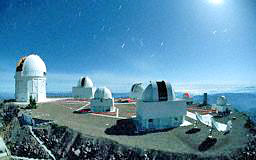
Cerro Tololo Observatory, Chile; and a caption of stars trails .
|
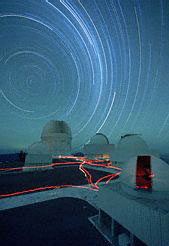 |
|
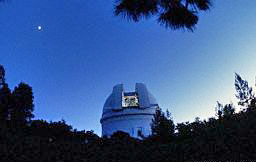
Above:
Mt. Palomar
Right:
Mauna Kea,
Hawaii |
 |
"....Commenting on the
NASA news conference, Newsweek (July 13,1987)
reported: NASA held a press conference last week to make a rather
strange announcement: an eccentric 10th planet may - or may not - be
orbiting the Sun." But unnoticed went the fact that the news
conference was called under the auspices of the Jet Propulsion
Laboratory, the Ames research Center, and NASA headquarters in
Washington. This meant that whatever had to become known bore the
stamp of approval of the topmost space authorities. The message was
hidden in a final comment by Dr. Anderson. Asked when Planet X would
be found, he said,
"I wouldn’t be surprised if it is found in 100
years, or it may never be found... and I wouldn’t be surprised if
it’s found next week."
"That, no doubt, was why three
NASA agencies had sponsored the news
conference: That was the news.
It is noteworthy that since 1984, after the enigmatic
IRAS
disclosure, there has been a spate of rushed construction of new or
enhancement of older powerful telescopes by the United States, the
Soviet Union, and European entities. Telescopes in the southern
hemisphere have received the most attention. In France, for example,
The Paris Observatory has formed a special team to search for
Planet
X, and a New Technology Telescope (NTT) was activated by the
European Southern Observatory in Cerro La Silla in Chile....
|
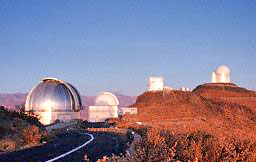
Cerro La Silla
|

Observatory, Chile
|
|
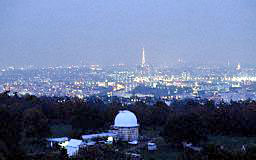
Paris Observatory
|
"....NASA had planned to loft the most powerful space telescope ever
built, the Hubble, when the shuttle program went awry after the 1986
Challenge accident; there is reason to believe that the expectation
of the discovery of Planet X in June 1987 was based on hope that
Hubble be lofted at that time (it was finally put into orbit at the
beginning of 1990 only to be found defective).
|
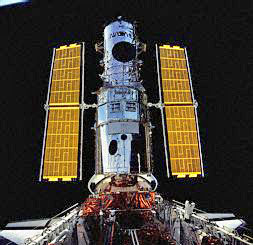
Hubble Telescope attached to Shuttle
|

Hubble being repaired
|
"....Dr. Harrington presented his latest findings in a paper
published in The Astronomical Journal (October 1988) titled "
The
Location of Planet X...."
"Sending me [to Mr. Sitchin] a reprint of the paper, he marked
alongside the northern portion of the sketch "Not consistent with
Neptune," and along the southern portion of the skies he wrote "Best
area now."
"On January 16, 1990, Dr. Harrington reported at the American
Astronomical Society meeting in Arlington, Virginia, that the U.S.
Naval Observatory has narrowed its search for the tenth planet to
the southern skies and has announced the dispatch of a team of
astronomers to the Black Birch Astronomic Observatory in New
Zealand. The data from Voyager 2, he disclosed, now lead his team to
believe that the tenth planet is about five times larger than Earth
and about three times further from the Sun than Neptune or Pluto.
"These are exciting developments, not only because they bring modern
science to the verge of announcing what the Sumerians
already knew
so long ago - that there is one more planet in our Solar System -
but also because they go a long way toward confirming the details of
the planet’s size and orbit.
"....By concluding that the inclination of
Planet X might be as high
as 30 degrees, modern astronomers corroborate Sumerian astronomical
data.
"So does the most recent determination that the planet is orbiting
toward us from the southeast, the direction of the constellation Centaurus. Nowadays we see there the zodiac
constellation Libra; but
in Babylonian/biblical times that was the place of Sagitarius....
"If Extraterrestrials exist, should Earthlings try to reach them? If
they can journey in space and reach Earth, will they be benign, or -
as H.G. Wells depicted in The War of the Worlds - will they come to
destroy, conquer, annihilate?
"....The Astronomer Royal,
Sir Martin Ryle, counseled against any
attempt by people on Earth to make their existence known. His
concern was that another civilization might see Earth and Earthlings
as a tempting source of minerals, food, and slaves. He was
criticized not only for paying too little heed to the possibility of
gain from such contacts but also for creating unnecessary fears:
"Given the immensity of space" (The New York Times editorialized),
"the nearest intelligent beings are not likely to exist closer than
hundreds of thousands of light years away."
"But, as the chronology of discoveries and superpower relations
indicates, it was realized by the time the first U.S - Soviet summit
was held that such intelligent beings are much closer to us than
that; there indeed exists one more planet in our own Solar System;
that it was known in antiquity as Nibiru; and that it was not
lifeless but peopled, with beings much more advanced than us.
"....The "working committee" [convened by the United States after
1985, with representatives of Soviet Union and many other nations]
to ponder the matter of Extraterrestrials....
"....What was the Committee required to consider? Not the
theoretical question of whether there are Extraterrestrials light
years away.... The task before the Committee was much more urgent
and ominous:
What should be done as soon as their existence is discovered.
"In April 1989, immediately after the Phobos 2 incident at
Mars, the
international team hammered out a set of guidelines. It was a
two-page document titled
DECLARATION OF PRINCIPLES CONCERNING
ACTIVITIES FOLLOWING THE DETECTION OF EXTRATERRESTRIAL
INTELLIGENCE.... it is clear that its principal purpose was to
maintain the control by certain authorities of the news following
the "detection of extraterrestrial intelligence."
"....Clause 8 [of The Principles] prohibit unauthorized response:
"....No response to a signal or other evidence of
extraterrestrial
intelligence should be sent until appropriate international
consultations have taken place. The procedures for such
consultations will be the subject of a separate agreement,
declaration or arrangement.
"....Why should there be pandemonium and worldwide panic if, say,
the authorities were to announce the possibility of intelligent life
in some star system several light years away? If they were thinking,
for example, that such a signal might come from the first star
system Voyager might come upon after it left the
Solar System, the
encounter would take place forty thousand years in the future!
Surely, that is not what has worried the Committee.
"Clearly, then, the
Principles were drawn up to its anticipation of
a message or phenomenon closer to home, from within the Solar
System....
"....Modern science has indeed caught up with ancient knowledge - of
Nibiru and the Anunnaki. And Man knows, once again, that
he is not
alone.
Return
|











